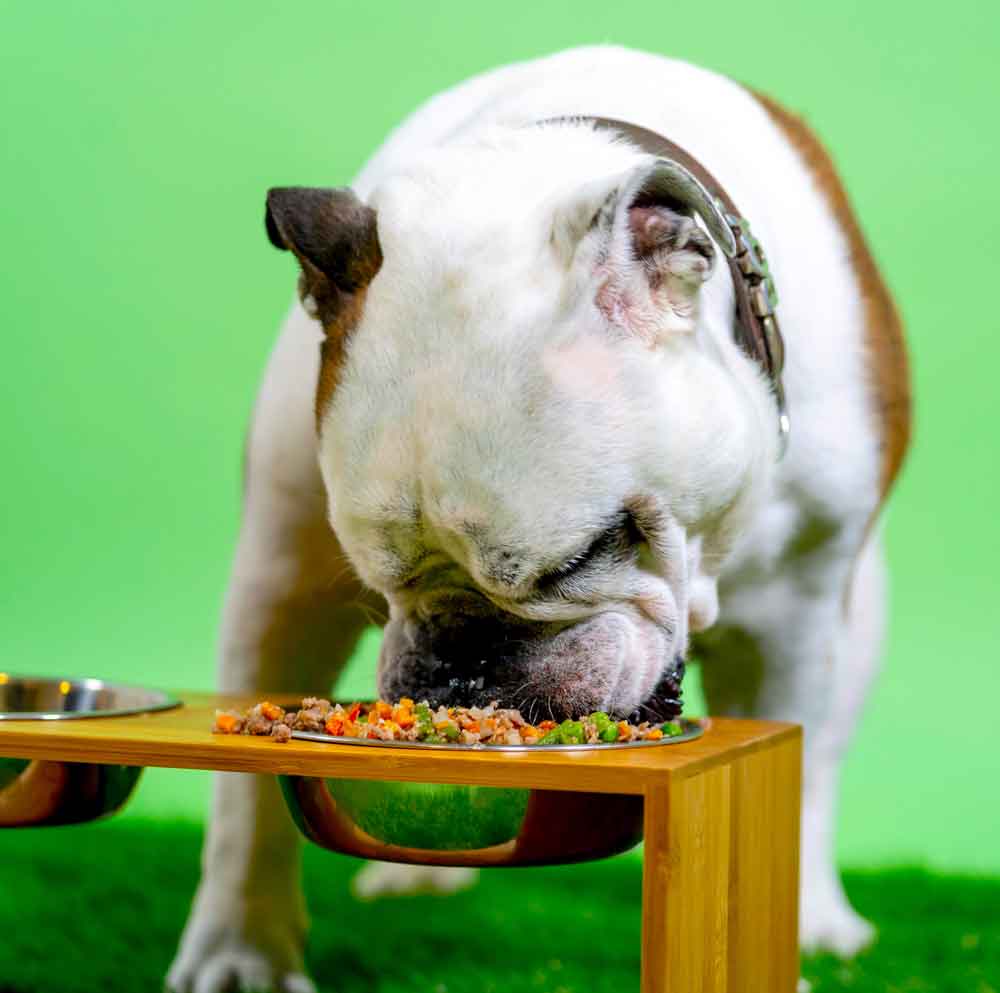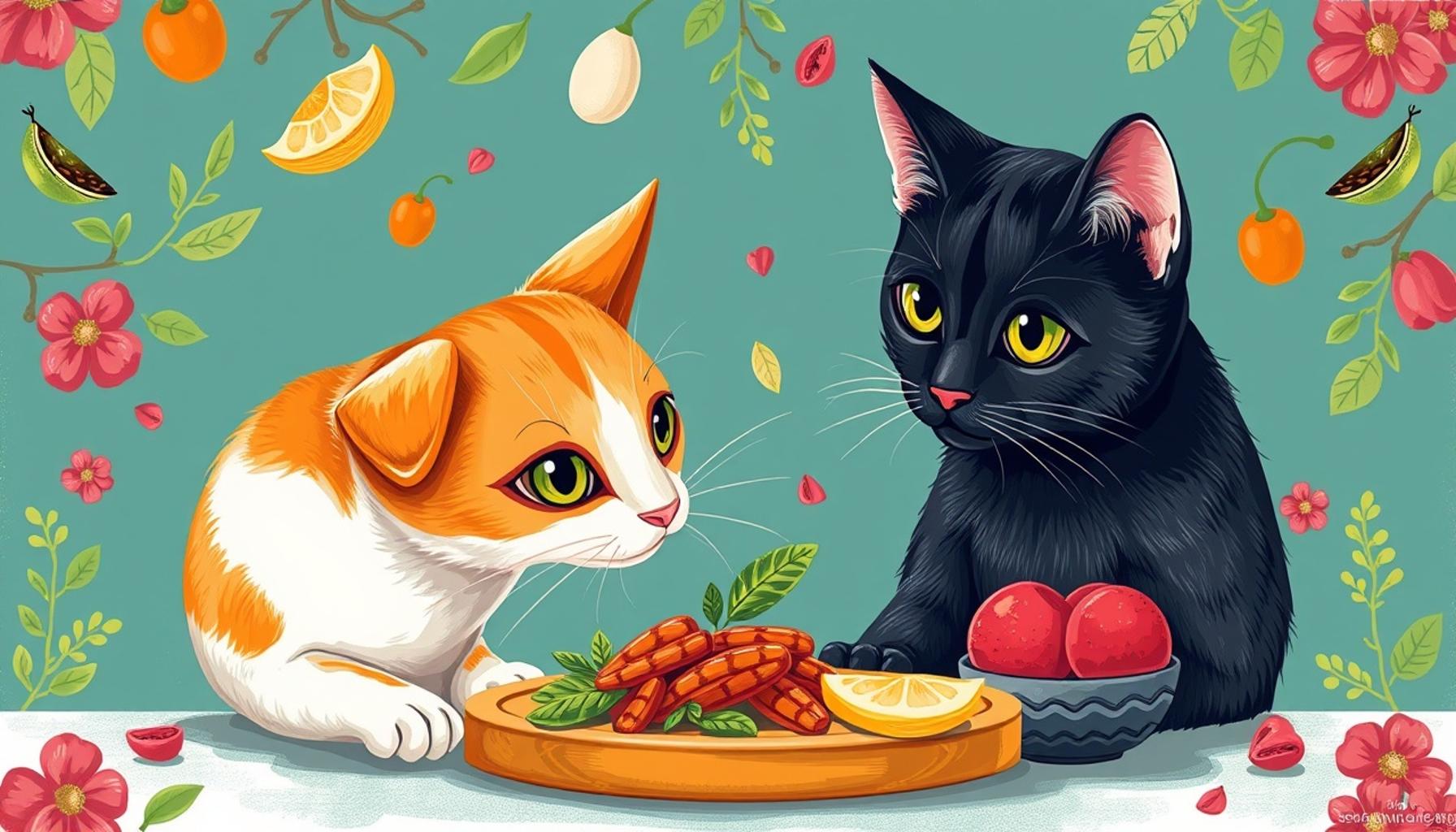Natural Foods vs. Processed Feed: What is Better for Your Animal?

Understanding Natural Foods for Pets
The trend toward natural foods for pets has gained momentum in recent years, largely driven by an increasing awareness among pet owners about the importance of quality ingredients. Natural pet foods aim to replicate a pet’s ancestral diet—think of a dog in the wild or a cat hunting in fields. This approach often leads to formulations that include:
- Whole ingredients like fresh fruits, vegetables, and meats. For instance, brands may incorporate blueberries for antioxidants, spinach for iron, and chicken as a primary protein source.
- Minimal processing, which helps preserve essential vitamins and minerals. Less processing usually means less time spent on the production line and more time for natural ingredients to retain their beneficial properties.
- Fewer additives and preservatives, creating a product that is more akin to whole, fresh food rather than a bag of kibble filled with artificial colors and flavors.
The Role of Processed Feeds
Conversely, processed feeds are favored for their practicality and consistency. They bring a level of convenience that many busy pet owners appreciate. The allure of processed pet food includes:
- Homogenized ingredients that ensure pets receive a consistent nutritional profile every day. This stability is particularly valuable for dogs and cats with specific dietary needs.
- Fortified nutrients designed to address particular health concerns, such as omega-3 fatty acids for skin health or additional calcium for growing puppies.
- Accessibility for pet owners with hectic lifestyles. Processed feeds can often be found at local stores or can be ordered online, eliminating the need for frequent trips to specialty shops.
Exploring the Impact on Pet Health
An essential aspect to consider as you navigate these choices is how each feeding option impacts not just your pet’s physical well-being, but their overall quality of life. For instance, pets on natural diets often exhibit shinier coats, increased energy levels, and healthier digestion, while those on processed feeds might benefit from the tailored nutrition and convenience but could also face challenges such as obesity if portion sizes aren’t monitored.
As the pet care industry evolves, it is equally critical to consult with veterinarians or pet nutrition specialists. They can provide insights that help customize a diet to suit your pet’s unique needs—after all, one size does not fit all in pet nutrition.
In summary, weighing the pros and cons of natural foods against processed feeds opens the door to a broader understanding of pet health. This exploration into nutritional benefits and potential concerns will assist you in making the most informed choices for your loving companions. Stay tuned for a deeper analysis in the following sections, where we delve into expert opinions and scientific studies to further illuminate your path in pet nutrition.

DISCOVER MORE: Click here to uncover the truths about effective cat training
Analyzing Nutritional Value
When it comes to assessing the effectiveness of natural foods versus processed feeds, one of the primary considerations is the nutritional value each option provides. Nutritionists and veterinarians emphasize that a well-balanced diet is essential for maintaining your pet’s health. But how do natural diets stack up against commercially available processed options?
Natural foods typically boast high-quality protein sources, derived from animals that have been raised without the use of hormones or antibiotics. This is crucial as it aligns with a pet’s natural dietary habits, promoting better digestion and absorption of nutrients. These foods are often enriched with whole-food supplements, providing not only essential vitamins but also phytonutrients that support overall health. Here are some key benefits associated with natural food diets:
- Higher bioavailability: Pets are more likely to absorb nutrients from foods with minimal processing and no fillers or artificial ingredients.
- Improved digestion: Many pet owners report less gastrointestinal upset in pets that consume natural foods, attributed to their digestible ingredients.
- Allergy-friendly options: For pets with food sensitivities, natural diets allow for ingredient control, potentially reducing allergic reactions.
On the other hand, processed feeds are designed to meet specific nutritional requirements set by veterinary experts, which can be an appealing aspect for pet owners. The inclusion of additives—like vitamins, minerals, and probiotics—aims to enhance overall health. However, the reliance on these added nutrients raises certain questions about the adequacy of the raw materials used. Consider the following advantages of processed feeds:
- Complete and balanced nutrition: Many processed options undergo rigorous formulation to meet the AAFCO (Association of American Feed Control Officials) standards, ensuring pets receive the nutrients they need.
- Convenience and affordability: Processed feeds are often more budget-friendly and easier to store, making meal prep hassle-free for busy owners.
- Longer shelf life: The packaging and preservation methods used in processed feeds allow for extended usability, which suits many households.
The choice between natural foods and processed feeds brings into focus the intrinsic connection between food source quality and pet health outcomes. As pet owners delve deeper into these options, they must ask themselves what they truly value in their pet’s diet: is it the authenticity of whole ingredients or the assurance of scientifically-balanced nutrition?
In the coming sections, we will explore various expert insights and detailed comparisons, equipping you with the information necessary to make a sound decision for your furry companions.
Natural Foods vs. Processed Feed: What is Better for Your Animal?
When considering what constitutes the best sustenance for your animal, it is important to weigh the differences in nutritional content and overall health implications between natural foods and processed feed. Natural foods, often consisting of organic fruits, vegetables, and grains, provide animals with vitamins, minerals, and enzymes in their most beneficial forms. Unlike processed feed, which may contain artificially created additives and preservatives, natural foods offer nutrient-rich options that promote optimal growth and vitality. An example of this would be the fatty acids found in fish and certain nuts, which are often lacking in commercial pet food. On the other side, processed feed is engineered for convenience and cost-effectiveness, offering long shelf life and readily available nutrition. However, this can come with a sacrifice of freshness and the potential loss of essential nutrients during processing. Understanding the package labels and ingredient sourcing is important to determine if the processed feed maintains quality protein sources and adequate vitamins.To further explore this dichotomy, consider the table below outlining the respective advantages of each approach to animal feeding.
| Natural Foods | Processed Feed |
|---|---|
| Rich in vitamins and minerals | Convenient and cost-effective |
| No artificial additives | Long shelf life |
In assessing the best feed for your animals, it is vital to consider their specific dietary needs and how both natural and processed options can serve those requirements. Each type has its own set of benefits that can contribute to the overall wellbeing of your animal, leading to happier and healthier lives. As you navigate this decision, the key is to stay informed and consider blending both approaches for a balanced diet.
DIVE DEEPER: Click here to learn how adopting a pet can enhance your well-being
The Role of Ingredients and Processing Methods
Another significant factor in the natural foods vs. processed feed debate lies in the ingredients used and the methods by which they are processed. Understanding these elements can guide pet owners in determining what is genuinely beneficial for their animals.
Natural foods tend to emphasize transparency in their ingredient sourcing. Many brands highlight grass-fed meats, organic vegetables, and a spectrum of whole carbohydrates, such as brown rice or sweet potatoes. This focus on high-quality ingredients often means fewer additives and preservatives, which can plague many processed options. For instance, preservatives like BHA and BHT, commonly found in processed feeds, have raised concern among pet owners due to potential health risks. Reports from veterinary studies suggest links between aggressive behavior and long-term consumption of such additives in pets.
A key consideration regarding processed feeds is the degree of processing that occurs before the pet food ultimately reaches your home. The extrusion process, commonly used in dry kibble production, can strip away essential nutrients. To compensate, manufacturers often add synthetic vitamins and minerals back into the mix. While this ensures a balanced diet that meets regulatory standards, some pet owners question whether synthetic nutrients provide the same benefits as those found in natural ingredients. Additionally, one must consider the temperature impact during processing; high-heat methods can destroy valuable enzymes and nutrients.
Moreover, many processed feeds include a mix of low-quality meat meals and byproducts. Although these ingredients can meet protein requirements, animal nutritionists argue that they often lack the full amino acid profiles that whole meat sources provide. When evaluating pet food labels, terms like “chicken meal” or “beef byproducts” might signal lower quality, especially if they are the primary protein source. Careful selection of ingredients can differentiate premium processed feeds from those that might compromise your pet’s health.
Another point of contention is the role of grain versus grain-free diets. While some experts advocate for grain-free options due to a perceived link to allergies or digestive issues, recent studies have shed light on the role of grain-inclusive diets in overall pet health. Whole grains can be beneficial sources of nutrients and fiber, aiding in digestion when sourced correctly. Therefore, pets with no identifiable grain allergies may thrive on a balanced diet that includes such ingredients.
As consumers become more conscientious about what they feed their pets, the market for both natural foods and high-quality processed feeds has expanded dramatically. Each owner must weigh their own values—whether they prioritize whole, recognizable ingredients or the carefully measured, scientifically formulated components of commercial feeds. The landscape of pet nutrition is ever-evolving, and it encourages pet owners to delve deeper into the science behind their choices.
DISCOVER MORE: Click here to learn about the benefits of positive training
Conclusion: Making Informed Choices for Your Pet’s Nutrition
In the ongoing discussion of natural foods vs. processed feed, the importance of understanding the underlying ingredients, processing methods, and nutritional implications cannot be overstated. Pet owners are faced with critical decisions that can significantly impact their furry companions’ health and overall well-being. Natural foods often emphasize whole, transparent ingredients, thereby minimizing the risk associated with additives and preservatives that may be present in many processed feeds.
Conversely, high-quality processed feeds can offer a scientifically balanced approach to nutrition, especially when formulated with premium ingredients and regulated by industry standards. However, it’s essential to scrutinize labels carefully, as the presence of low-quality meat meals and synthetic additives can compromise the nutritional value pets receive. Moreover, navigating dietary preferences, such as grain-free versus grain-inclusive options, adds another layer to these choices, inviting pet owners to investigate further into what may be the best fit for their animals.
As pets evolve into valued family members, understanding the dynamics of their dietary needs has never been more crucial. By exploring both natural and processed options and staying informed about advancements in animal nutrition, pet owners can make choices that align with their values and their pets’ requirements. Ultimately, the responsibility lies with each owner to define what constitutes the best nutrition for their animal—ensuring a healthy, happy, and vibrant life for their beloved companions.


